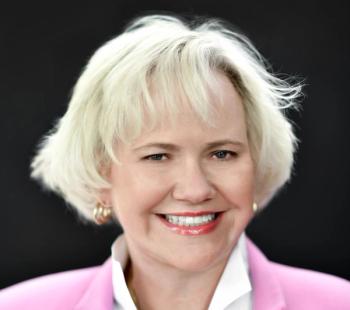
Technology alone won’t fix a ‘failed’ health system | HIMSS 2023

During a spirited panel discussion, some high-profile leaders talked about the deficiencies in healthcare that won’t be mended by the latest high-tech solutions.
Chicago – Even as he participated in a panel during a keynote session Wednesday, Tim Barry joked that he could end up getting kicked out of the HIMSS Conference.
Barry is the CEO, co-founder and board chairman of VillageMD, a provider of primary and multi-specialty care backed by Walgreens Boots Alliance. He offered blunt assessments about the problems in the healthcare industry.
Speaking to thousands of health professionals at the massive digital health conference, Barry said he had worries about the technology that is being developed.
“We’re going to design technology for a continued failed system,” Barry said.
To be sure, Barry and the other well-known healthcare leaders on the panel were hardly saying they wanted to put a halt to developing new technology. But they said fundamental issues must be addressed that require greater focus on patients.
While there are many reasons, Barry noted that doctor’s offices aren’t open 24/7, even though that is what patients would like to see.
“At the end of the day, we’re not meeting the needs consumers have,” Barry said.
Andrea Walsh is the president and CEO of HealthPartners, which operates hospitals and clinics in Minnesota and Wisconsin and manages a health plan. Walsh, another member of the panel, said the U.S. health system “is not really a system.”
“We’re a collection of solutions that are in the moment and we leave it to consumers to figure out what they need and when they need it,” she said.
Walsh’s assessment drew support from Barry, who said, “We’re not thinking as a system.”
On a similar theme, Barry pointed out that too many people who leave the hospital don’t see their primary care physician within the following days of their discharge, even though a great deal of research indicates that’s an important step in preventing a return trip to the hospital.
“We can freakin’ focus on it,” Barry said. “We need people to care enough to make it a reality.”
Barry drew applause when he offered his recommendation on improving care: “Keep seeing the patient as often as you possibly can.”
“It’s a matter of saying this is the operational process we are going to execute on, as if it was our own parents,” he said.
Walsh said healthcare consumers want relationships. They also want healthcare to more accessible and affordable.
She said she would like to rewire healthcare in America. “People want to play in their silos,” Walsh said. “Healthcare is a team sport.”
Patients increasingly are looking to get healthcare in the home, said Deborah Di Sanzo, the president of
- Read more:
Hospital at home: Special report
“We can make the path smoother between care at home and care at the hospital,” Di Sanzo said.
Best Buy said the company’s technology and logistical support can help improve patient care.
“We thought we could make a difference with the plumbing, if you will,” Di Sanzo said.
“We don’t deliver care,” she added. “We take care of the technology so the clinicians can deliver the care.”
Healthcare providers need to take a different approach to serving their patients, Barry said. If patients have to think of certain treatments or devices, Barry said, “We failed you.”
“We have to be thinking about the customer at all times,” Barry said.
Vin Gupta, chief medical officer of Amazon Pharmacy and a medical analyst for NBC News, moderated the spirited panel discussion and asked the leaders how they envision healthcare five years from now.
Walsh said she’s not sure what primary care will look like in the future, but she said she expects it is going to be different.
“Healthcare consumers want something fundamentally different,” Walsh said.
In five years, Di Sanzo said more patients will be “healing and staying well in the environment they want to be, which is the home.”
As for Barry, he predicted, “Quantifiably improved quality of care, and we have to reduce the cost of healthcare.”
He added, “Whether we do it or it’s imposed on us.”






















































































